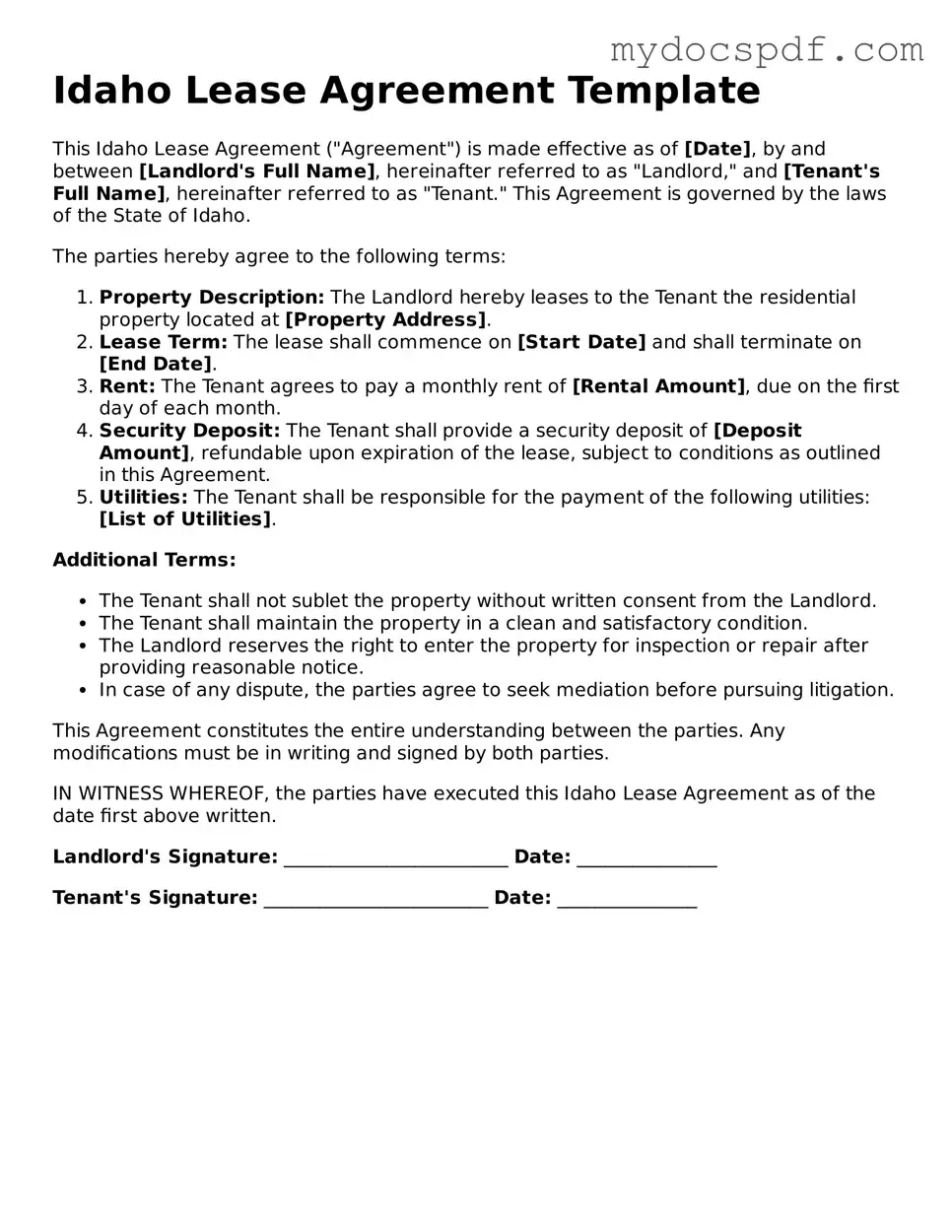Idaho Lease Agreement Template
This Idaho Lease Agreement ("Agreement") is made effective as of [Date], by and between [Landlord's Full Name], hereinafter referred to as "Landlord," and [Tenant's Full Name], hereinafter referred to as "Tenant." This Agreement is governed by the laws of the State of Idaho.
The parties hereby agree to the following terms:
- Property Description: The Landlord hereby leases to the Tenant the residential property located at [Property Address].
- Lease Term: The lease shall commence on [Start Date] and shall terminate on [End Date].
- Rent: The Tenant agrees to pay a monthly rent of [Rental Amount], due on the first day of each month.
- Security Deposit: The Tenant shall provide a security deposit of [Deposit Amount], refundable upon expiration of the lease, subject to conditions as outlined in this Agreement.
- Utilities: The Tenant shall be responsible for the payment of the following utilities: [List of Utilities].
Additional Terms:
- The Tenant shall not sublet the property without written consent from the Landlord.
- The Tenant shall maintain the property in a clean and satisfactory condition.
- The Landlord reserves the right to enter the property for inspection or repair after providing reasonable notice.
- In case of any dispute, the parties agree to seek mediation before pursuing litigation.
This Agreement constitutes the entire understanding between the parties. Any modifications must be in writing and signed by both parties.
IN WITNESS WHEREOF, the parties have executed this Idaho Lease Agreement as of the date first above written.
Landlord's Signature: ________________________ Date: _______________
Tenant's Signature: ________________________ Date: _______________
